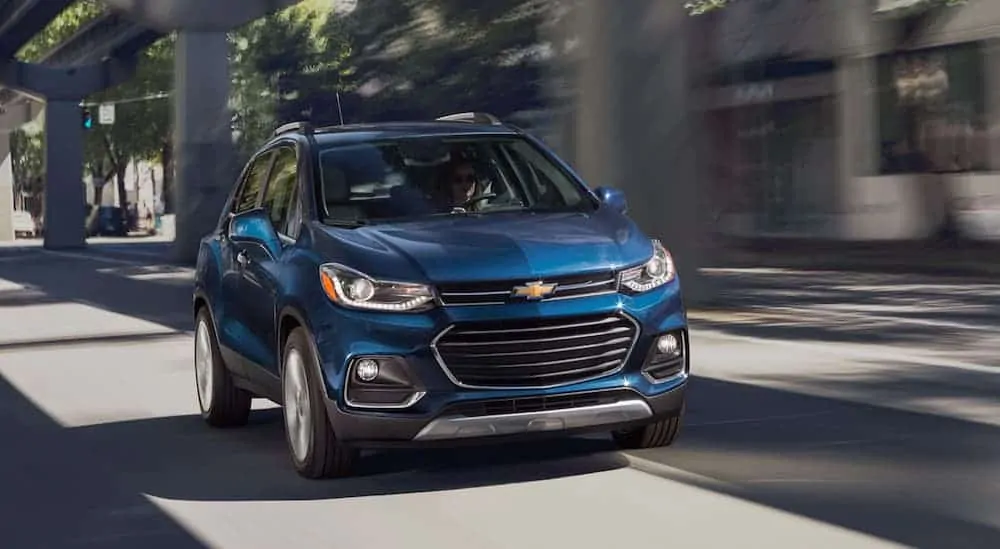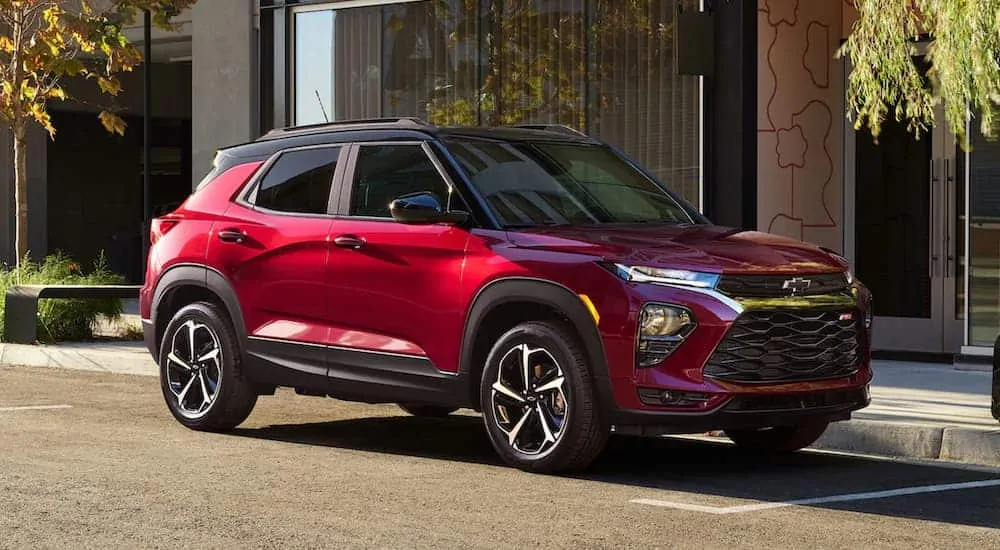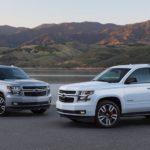First off, the answer to that question is yes, size does matter when it comes to SUVs and how you should consider them. Whether you are looking to buy a new vehicle, simply like to keep an eye on what’s out there, or consider yourself a Chevy enthusiast, when looking at Chevy SUVs, you can see there are a lot of options. The current lineup of Chevy models is probably as robust as it has ever been––especially since the all-new Trailblazer joined the collection rather than replacing one of the existing models as a lot of people expected.
With that in mind, it can be easy to look at this lineup and think that it’s excessive or that it has some more to it that’s really unnecessary. Now, there are arguments to be made on both sides of that idea, but today I’m going to look at the Chevy SUVs available with one very specific thing in mind: size. If you’re looking for details on interior trim options and technology, then look elsewhere, my friend. This is all about the bigness.
Specifically, I’m going to go down the list in order from smallest to largest overall, to see what’s available. And by the end of this, we should have a sense of if all of these choices are really worthwhile, or if there’s some excess here to be trimmed away.
First: Size Categories
Before we get all into this, let’s take a moment to break down what we have into a few basic categories. In general, Chevy SUVs fall into the size categories you would expect, but there are some important differences and nuances here to consider. Here are the categories and which ones you’ll find in each:
- Compact: Trax
- Small: Trailblazer, Equinox
- Midsize: Blazer, Traverse
- Full-Size: Tahoe
- Large: Suburban
So, just from a quick look, it would seem that small and midsize are the most popular categories, with two offerings in each of them. I can’t help but wonder if “full-size” and “large” really need to be separate things, but let’s dig into each of these models to see what they have to offer.
2020 Chevy Trax

First up is the Chevy Trax, the only compact offering in the current lineup of Chevy SUVs. This is a two-row model with seating for up to five passengers and all sorts of options inside that we’re not going to bother with today. In terms of overall size, the Trax measures a sturdy 167.7 inches in length and up to 66.5 inches in height, though it can measure 65 inches high on some models. With that size, you get up to 48.4 cu.ft. of total interior cargo volume, which seems good for a compact SUV, but it’s the lowest amount of cargo space on offer.
2021 Chevy Trailblazer
Next on our plate, we have the all-new Chevy Trailblazer, which many people had suspected was going to replace a model in the lineup but has instead been added to it. This is our first of two small Chevy SUVs, and it’s a two-row model with seating for up to five people. That being said, it’s a bit larger than the Trax, measuring 173.5 inches in length and 65.7 inches in height––that’s actually not taller than the Trax, but a good 6 inches longer. With that size, you get up to 54.4 cu.ft. of interior cargo space, which is a good bit more than in the Trax.
2020 Chevy Equinox
Now we come to the Chevy Equinox, our second small Chevy SUV, and here we’re going to see if it’s really worthwhile to have two of them. Much like the Trailblazer, the Equinox is a two-row model with seating for up to five people, so there’s a lot of overlap there. In terms of size, the Equinox measures 183.1 inches in length and 65.4 inches in height. As you can see, that’s pretty much the same height, but it’s about 10 inches longer than the Trailblazer. That extra size means the Equinox has up to 63.9 cu.ft. of interior cargo space available.
So, we can see that this model is a healthy bit longer than the Trailblazer and gives you nearly 10 cu.ft. more interior cargo space. I’d say that justifies having two entries in this category.
2020 Chevy Blazer
Here we have the first of our two midsize Chevy SUVs, the 2020 Blazer––not to be confused with the all-new Trailblazer––they’re completely separate models. The Blazer is a two-row model with seating for up to five people inside, much like the compact and small models we’ve looked at so far. This beauty measures 191.4 inches in length and 67 inches in height; which means it is a couple of inches taller than the smaller models and a good 8 inches longer than the Equinox. But here’s the catch: it has just 64.2 cu.ft. of interior cargo space, barely more than the Equinox, which measures quite a bit shorter in length.
2020 Chevy Traverse
Things are about to go off the rails entirely because the 2020 Traverse is also a midsize SUV, just like the Blazer. However, it has three rows of seating and can accommodate up to eight passengers, significantly more than the Blazer. The Traverse measures 204.3 inches in length and 70.7 inches in height. A quick glance reveals that it’s more than a foot longer than the Blazer and a good 3 inches taller. Oh, and the Traverse offers up to 98.2 cu.ft. of interior cargo space––more than 30 cu.ft. more than the Blazer.
That’s a huge difference! Seriously, how are these even in the same category?
2021 Chevy Tahoe
Now we come to the sole full-size offering in the current lineup of Chevy SUVs, the all-new Tahoe, which has been made larger than before and offers much more interior space. This is a three-row model with seating for up to eight passengers, though a seven-passenger model is available. How much bigger is the Tahoe now? The 2021 model measures a robust 210.7 inches in length and 75.9 inches in height while giving you up to 122.9 cu.ft. of interior cargo space.
That’s significantly bigger than the Traverse and certainly justifies its place in the lineup.
2021 Chevy Suburban
Finally, we come to the serious beast in our lineup of Chevy SUVs, the all-new Suburban, which, like the Tahoe, is bigger than ever. The 2021 model is a “large family SUV,” and gives you three rows of seats, offering seating for up to eight people. This massive beauty measures a stout 225.7 inches in length and 75.7 inches in height, offering up to 144.7 cu.ft. of cargo space. That definitely lives up to its reputation and its categorization as a large SUV that you can load up with pretty much everything you could want.
So, now that we’ve seen how all of these Chevy SUVs measure up, what do we think of the lineup?
The Verdict
Honestly, it mostly shook out as I expected––this isn’t exactly my first rodeo. For the most part, the categories are all well-represented here, and they generally make sense, with larger models in terms of overall dimensions and how much space you get inside as you go up the categories. After all, by the time you get to the Suburban, you’re getting triple the interior cargo space the Chevy Trax has to offer, which is a bit intense.
Honestly, looking at the lineup of Chevy SUVs by size, I’d say the Blazer really doesn’t have much of an identity at this point. It barely gives you anything in terms of size that you can’t get with the Equinox, despite the Blazer being midsize and the Equinox being small. Plus, compared to the other midsize option, the Traverse, it seriously comes up short. I’m sure it has some great options available, but purely from the perspective of overall size and interior cargo space, I’d go with either the Equinox or the Traverse.





